In the vast pantheon of prehistoric creatures, few are as bizarrely constructed yet surprisingly overlooked as Tanystropheus. Living approximately 242-232 million years ago during the Middle Triassic period, this extraordinary reptile boasted one of the most extreme body proportions ever evolved: a neck that was longer than its entire body and tail combined. Neither dinosaur nor plesiosaur, this peculiar animal represents one of evolution’s most fascinating experiments with body structure. Despite its remarkable anatomy, Tanystropheus remains relatively unknown to the general public, overshadowed by more famous prehistoric creatures. Let’s dive into the strange world of this remarkable long-necked wonder and discover why paleontologists find it so captivating.
The Anatomical Marvel: A Neck Like No Other

Tanystropheus’ most striking feature was undoubtedly its extraordinarily elongated neck, which made up about half of its total body length. Unlike the flexible necks of many long-necked animals, Tanystropheus’ neck contained only 12-13 vertebrae, but each was remarkably elongated—up to 30 cm (12 inches) long in larger specimens. These bizarre proportions have puzzled scientists since the creature’s first fossils were discovered in the 1850s. Initially, paleontologists were so confused by the extreme length of these neck bones that they mistook them for limb bones of a flying pterosaur. The neck’s structure suggests limited flexibility, particularly in vertical movement, creating a rather rigid rod-like apparatus that extended from the animal’s relatively small head to its more conventionally proportioned body. This anatomical peculiarity has no exact parallel among living or extinct animals, making Tanystropheus one of the most uniquely constructed vertebrates in Earth’s history.
Not a Dinosaur: Taxonomic Classification
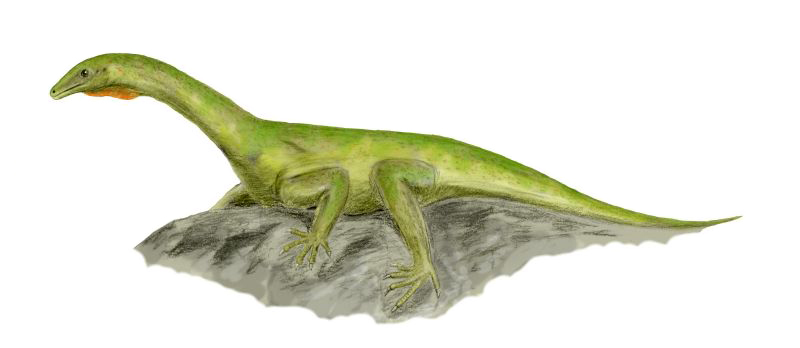
Despite its prehistoric appearance, Tanystropheus was not a dinosaur but belonged to a group called Protorosauria or sometimes placed within Archosauromorpha. This classification places it closer to the ancestors of modern crocodiles, lizards, and dinosaurs rather than within the dinosaur lineage itself. Tanystropheus lived during the Middle Triassic period, approximately 10 million years before the first true dinosaurs appeared on Earth. The creature represents a separate evolutionary experiment in reptile body design that emerged during the great diversification of reptiles following the devastating Permian-Triassic extinction event. Its unusual anatomy demonstrates how the Triassic period was characterized by evolutionary experimentation, producing many strange body forms that have no modern equivalents. Understanding Tanystropheus’ proper taxonomic position helps paleontologists trace the complex evolutionary pathways that led to the diverse reptile groups we see today, from lizards and snakes to crocodilians and birds.
Fossil Discoveries: Where Has Tanystropheus Been Found?
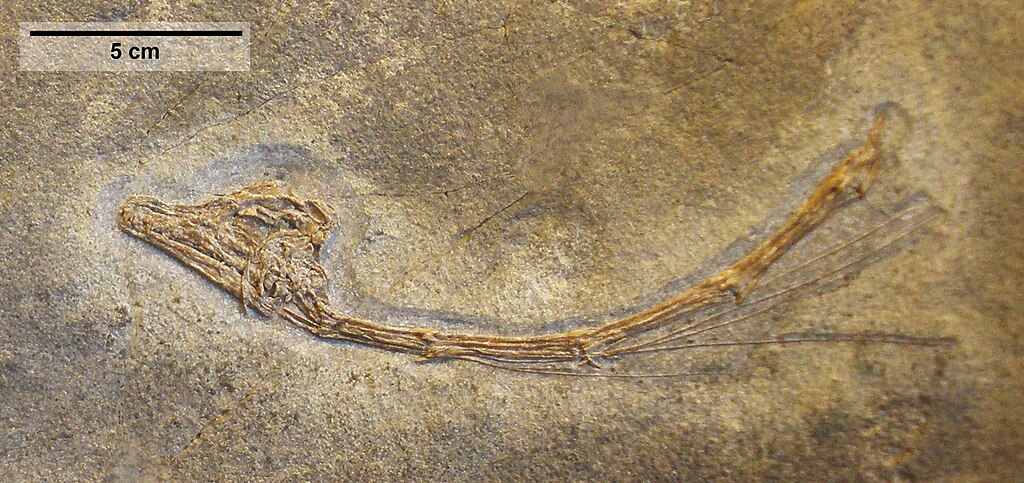
Tanystropheus fossils have primarily been discovered in Middle Triassic marine deposits in Europe and the Middle East, with the most significant specimens coming from Monte San Giorgio on the border between Switzerland and Italy. This UNESCO World Heritage site has yielded exceptionally well-preserved fossils that have greatly enhanced our understanding of this unusual reptile. Additional remains have been found in locations including Germany, Austria, Israel, and China, suggesting a relatively wide distribution across the ancient Tethys Sea that once separated the northern and southern continental masses. The quality of preservation at Monte San Giorgio has been particularly valuable, with some specimens retaining even delicate structures rarely fossilized. In 2020, new discoveries from Switzerland provided crucial evidence about the creature’s lifestyle and feeding habits, including remarkably preserved skull materials. These geographically diverse findings indicate that Tanystropheus was a successful evolutionary experiment that thrived across a significant portion of the ancient world’s shallow marine environments.
Size and Species Variations: Not Just One Kind
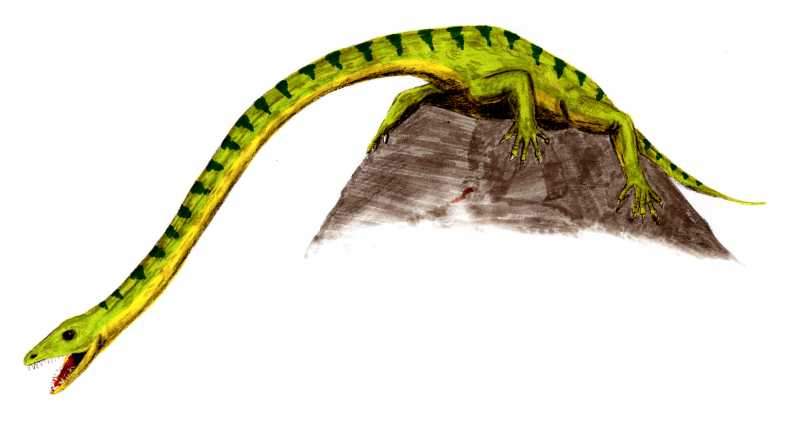
Paleontologists have identified multiple species of Tanystropheus, with significant size variations between them. The largest species, Tanystropheus hydroides (named in 2020), reached lengths of approximately 6 meters (20 feet), with roughly half of that being neck. In contrast, smaller species like Tanystropheus longobardicus measured only about 1.5 meters (5 feet) in total length. For decades, scientists debated whether these size differences represented different species or simply growth stages of the same animal. Research published in 2020 definitively settled this question by analyzing bone histology and skull anatomy, confirming that the different-sized specimens represented distinct species that coexisted in the same environments. The smaller species showed adaptations for a different diet and ecological niche than their larger relatives, suggesting a case of niche partitioning where related species evolved to utilize different resources within the same habitat. This discovery highlighted how the Tanystropheus lineage diversified to exploit various feeding opportunities in Triassic coastal ecosystems.
Aquatic Lifestyle: Marine Adaptations

While earlier interpretations suggested Tanystropheus might have been a shore-dwelling animal that used its long neck to fish from land, current scientific consensus points strongly toward an aquatic lifestyle. Several anatomical features support this conclusion, including nostrils positioned on top of the snout (similar to modern crocodiles), limbs that appear adapted for swimming rather than efficient terrestrial locomotion, and the location of its fossils in marine deposits alongside fish and other marine organisms. Particularly telling is the animal’s center of gravity, which would have made walking on land extraordinarily difficult with such a disproportionate neck. Computer modeling of its swimming capabilities suggests Tanystropheus would have been an effective aquatic predator, using its unusual body shape to advantage in shallow marine environments. Recent studies indicate that its bizarre proportions may have evolved specifically for a specialized form of aquatic hunting, where the small head at the end of the long neck could approach prey without the larger body alerting potential meals to the predator’s presence.
Feeding Strategies: How Did That Neck Function?
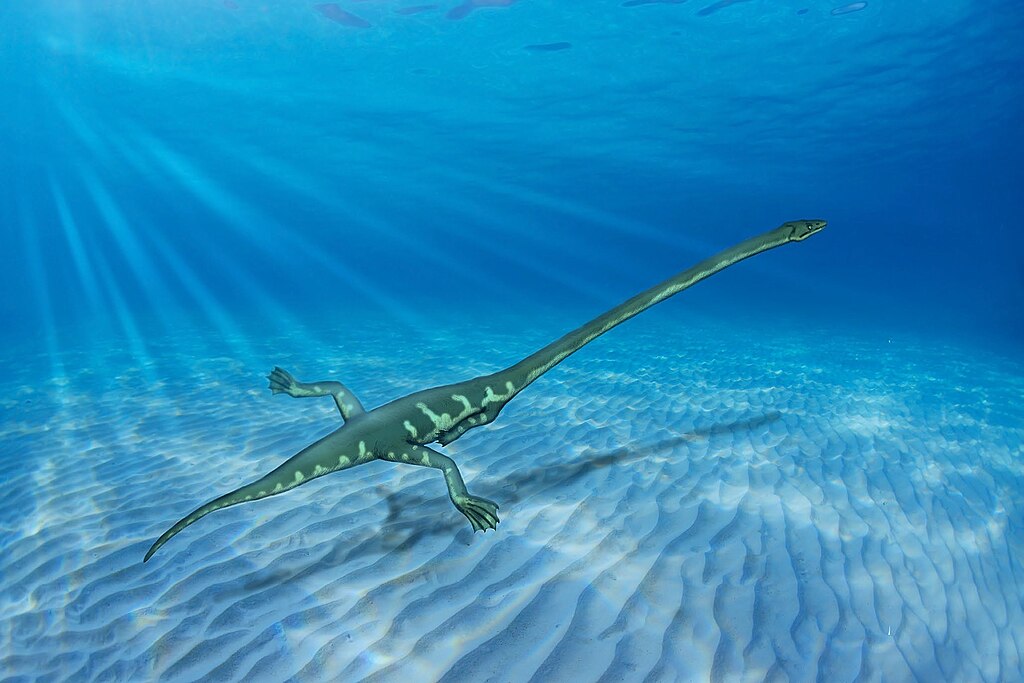
The feeding mechanism of Tanystropheus has been the subject of considerable scientific debate, with its extreme neck-to-body ratio presenting a biomechanical puzzle. Recent research suggests that the animal was an ambush predator that used its long neck to strike at fish and squid-like creatures from a distance. The teeth of Tanystropheus provide important clues about its diet—larger species had conical teeth ideal for grasping slippery prey like fish, while smaller species possessed more numerous, brush-like teeth better suited for capturing small crustaceans or other tiny marine organisms. Intriguingly, the neck’s structure indicates it couldn’t be bent sharply up or down but had some lateral flexibility, suggesting the animal may have approached prey from the side rather than from above or below. Computer simulations indicate that despite its unwieldy appearance, the neck could be thrust forward with surprising speed, creating an effective strike zone much larger than that of other marine predators of similar size. This specialized feeding apparatus represents a unique evolutionary solution to the challenges of aquatic predation in Triassic seas.
The Biomechanical Puzzle: Could It Actually Move?
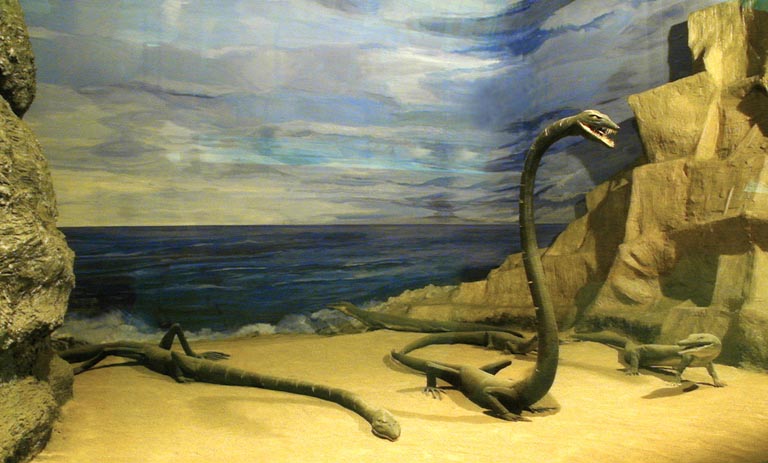
The extreme proportions of Tanystropheus create a fascinating biomechanical problem that has challenged paleontologists for decades. How could an animal with such a disproportionately long neck move effectively without the neck becoming an unwieldy burden? Computer modeling studies have shown that on land, the neck would have created severe balance issues, supporting the theory that Tanystropheus was primarily aquatic. In water, the neck’s weight would have been partially supported by buoyancy, making movement more manageable. Analysis of the neck vertebrae reveals they contained hollows and lightweight structures that would have reduced their weight while maintaining structural integrity. The neck vertebrae also had specialized interlocking joints that prevented excessive bending while allowing sufficient movement for feeding. Biomechanical studies suggest that in water, Tanystropheus likely kept its neck relatively straight during swimming, possibly using slight undulations to assist propulsion and only actively maneuvering it when approaching prey. This bizarre anatomical configuration represents one of evolution’s most extreme experiments in vertebrate body design, pushing the limits of biomechanical possibility.
Reproduction and Life Cycle: A Mystery Being Unraveled

The reproductive biology of Tanystropheus remains largely shrouded in mystery, though recent discoveries have begun to illuminate aspects of its life cycle. Some paleontologists have proposed that, like many marine reptiles, Tanystropheus may have given birth to live young rather than laying eggs, an adaptation that would have suited its aquatic lifestyle. However, definitive evidence for this hypothesis remains elusive. Growth ring analysis of fossilized bones suggests that Tanystropheus had a relatively slow growth rate compared to many other reptiles of the time, potentially taking several years to reach sexual maturity. Juvenile specimens show proportionally shorter necks than adults, indicating that the extreme neck elongation developed progressively throughout the animal’s life. This ontogenetic change (development throughout the life cycle) suggests young Tanystropheus may have occupied somewhat different ecological niches than adults, potentially reducing competition between generations. The discovery of multiple growth stages preserved in the fossil record has been crucial for understanding how these bizarre animals developed their characteristic proportions over time.
Predators and Threats: Surviving in the Triassic Seas

Despite its formidable size, Tanystropheus would have faced numerous threats in the dangerous Triassic oceans. Large marine predators of the time included massive ichthyosaurs, early crocodile relatives, and other large marine reptiles that could have preyed upon Tanystropheus, particularly targeting its vulnerable, elongated neck. Fossil evidence suggests that the creature’s awkward proportions might have made rapid escape difficult once spotted by predators. Some paleontologists have hypothesized that Tanystropheus may have used shallow, complex environments like coral reefs or mangrove-like forests as protection, where larger predators would have had difficulty maneuvering. The animal’s relatively small head at the end of its long neck may have provided a survival advantage by being less visible to potential prey and predators alike. Additionally, some specimens show evidence of healed injuries, suggesting that these animals could survive attacks and lived long enough for bones to repair—a testament to their resilience despite their seemingly vulnerable design. The continued success of the Tanystropheus lineage for millions of years demonstrates that, despite its bizarre proportions, it was a remarkably effective evolutionary adaptation.
Extinction: Why Did They Disappear?
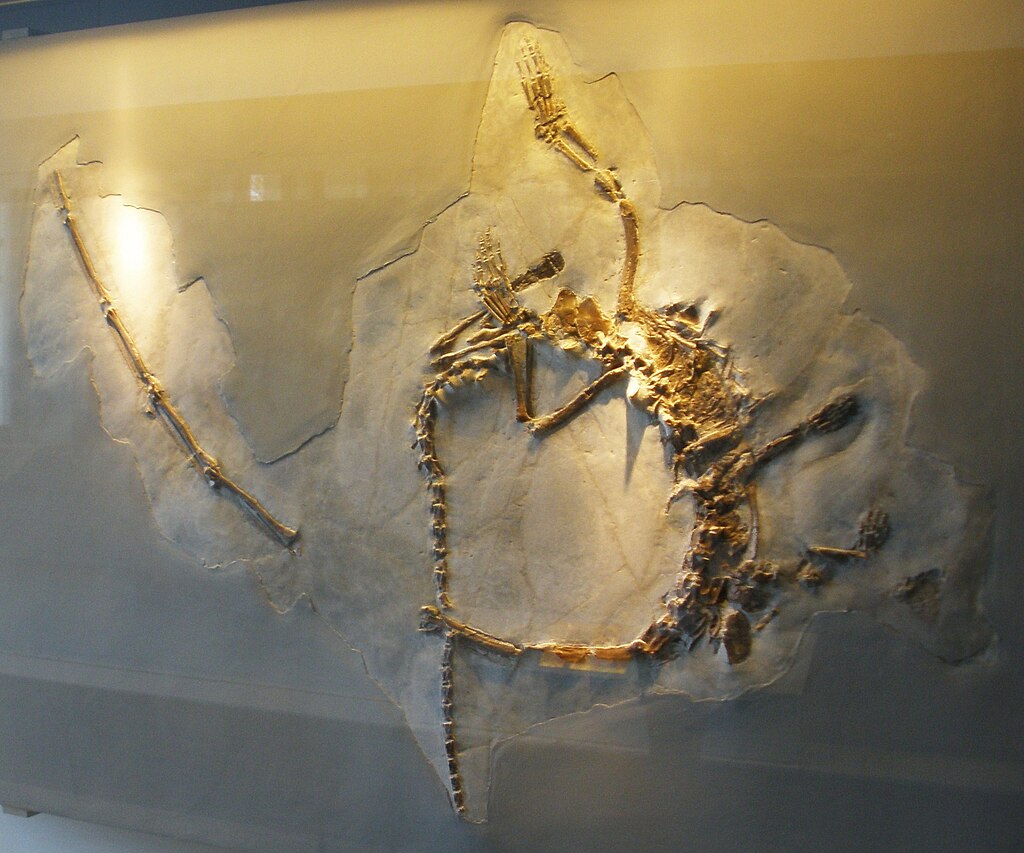
The Tanystropheus lineage appears to have gone extinct by the late Triassic period, approximately 205 million years ago, after flourishing for over 30 million years. Their disappearance coincided with significant ecological changes in marine ecosystems and the rise of new, more efficient marine predators. During this time, ichthyosaurs and sauropterygians (including plesiosaurs) were evolving more sophisticated swimming adaptations and predatory strategies that may have outcompeted the specialized but less versatile Tanystropheus. Additionally, the Late Triassic saw several extinction events that affected marine life significantly, potentially creating environmental stresses that this highly specialized genus couldn’t overcome. Climate changes affecting sea levels and ocean temperatures would have altered the shallow coastal environments where Tanystropheus thrived. The extreme specialization that made Tanystropheus successful in stable environments may have ultimately contributed to its downfall when those environments changed rapidly. This pattern of highly specialized animals being more vulnerable to extinction during periods of environmental change is a recurring theme throughout evolutionary history.
Scientific Significance: What Tanystropheus Teaches Us

Tanystropheus holds special significance for paleontologists and evolutionary biologists as it demonstrates the remarkable extremes of morphological adaptation possible through natural selection. The genus represents a compelling case study in evolutionary experimentation during the Triassic—a period when reptiles were radiating into numerous ecological niches following the Permian-Triassic mass extinction. By studying Tanystropheus, scientists gain insights into the biomechanical limits of vertebrate anatomy and the process of adaptation to specialized ecological niches. The creature’s unusual proportions challenge our understanding of functional morphology and force researchers to reconsider assumptions about the relationship between form and function in extinct animals. Additionally, the coexistence of differently-sized Tanystropheus species provides valuable information about niche partitioning and resource division in ancient ecosystems. As a highly specialized but ultimately extinct lineage, Tanystropheus also offers lessons about the trade-offs between specialization and adaptability in evolutionary history, showing how extreme adaptations can be both advantageous in stable conditions and potentially limiting when environments change.
Popular Culture and Public Fascination

Despite its remarkable appearance, Tanystropheus has received relatively little attention in popular culture compared to dinosaurs and other prehistoric creatures. When it does appear in documentaries or popular science publications, it’s often featured as an example of evolution’s stranger experiments. The creature made a memorable appearance in the BBC documentary “Walking with Monsters” (2005), where it was portrayed as a shore-dwelling reptile that fished from coastal rocks—a depiction that modern paleontological evidence now suggests was inaccurate. In recent years, improved scientific understanding of Tanystropheus has slowly increased its visibility in museums and educational materials. Several natural history museums now feature Tanystropheus reconstructions, including the striking display at the Paleontological Museum of Zurich, which showcases the creature’s extraordinary proportions. The peculiar appearance of this animal makes it an excellent ambassador for teaching about the diversity of prehistoric life beyond dinosaurs and for introducing the public to the concept of convergent evolution and specialized adaptations. As new research continues to reveal more about this unusual reptile, public fascination with Tanystropheus is likely to grow.
Recent Research Breakthroughs
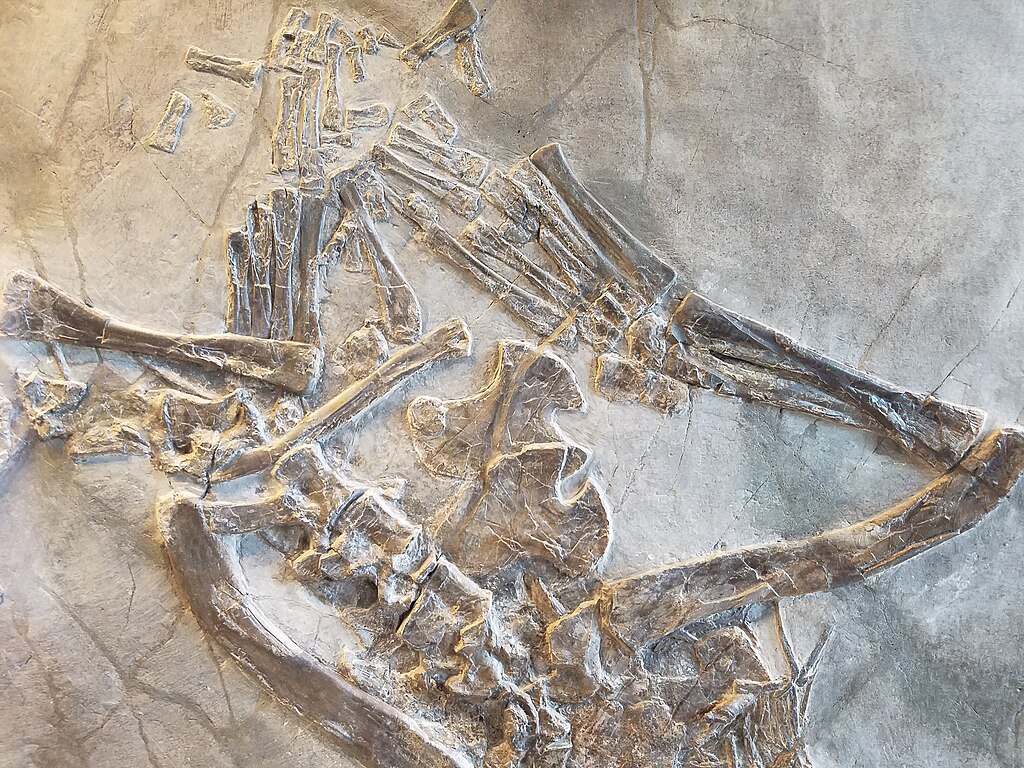
The last decade has seen significant advances in our understanding of Tanystropheus, overturning many long-held assumptions about this enigmatic creature. A groundbreaking 2020 study published in Current Biology used advanced CT scanning technology to reconstruct crushed skull fossils, providing definitive evidence that the differently-sized Tanystropheus specimens represented distinct species rather than growth stages. The same research confirmed the animal’s aquatic lifestyle through detailed analysis of skull morphology, particularly the position of the nostrils on top of the snout. Another recent study employed computer simulation to test the hydrodynamics of the animal’s unusual body shape, demonstrating that its proportions would have been significantly more manageable in water than on land. New fossil discoveries have continued to emerge, including better-preserved specimens that provide insights into soft tissue anatomy and potential coloration patterns. Ongoing histological analysis of Tanystropheus bones is revealing details about growth rates, metabolic patterns, and life history strategies. These recent advances illustrate how new technologies and analytical approaches continue to enhance our understanding of extinct organisms, even those known to science for over 150 years.
Conclusion

Tanystropheus stands as one of nature’s most extraordinary evolutionary experiments—a testament to the incredible diversity of life that has existed on our planet. With its improbable proportions and specialized lifestyle, this bizarre marine reptile challenges our understanding of biological possibility and reminds us that the history of life on Earth is filled with creatures far stranger than fiction. While not as famous as many dinosaurs, Tanystropheus deserves recognition as one of the most remarkable anatomical specialists ever to evolve. As research continues to unravel the mysteries of this long-necked wonder, we gain valuable insights into the processes of evolution, specialization, and adaptation. The story of Tanystropheus is far from complete, but each new discovery brings us closer to understanding this captivating creature that once patrolled the shallow seas of the Triassic world with its extraordinary neck extended before it—a true icon of evolutionary wonder.



